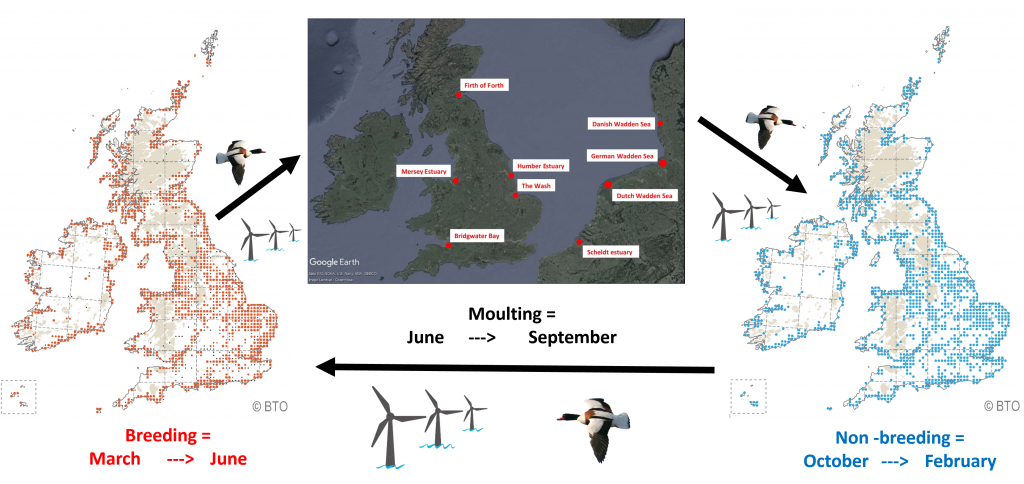
Common shelduck (Tadorna tadorna) have six known populations across the northern hemisphere. For my PhD I am focussing on the northwest European population. This population of ~250,000 individuals has a broadly three part migration strategy, moving east-west between breeding, moulting and non-breeding grounds. For UK breeding common shelduck these migratory movements may involve them crossing seas to reach moulting areas, and for those individuals that breed on the continent, they may migrate over the North Sea to spend the non-breeding season in the UK. These sea crossings might mean the shelduck interact with offshore wind farms. There are an increasing number of offshore wind farms in UK waters, and in the North Sea more broadly. The potential impacts of these offshore wind farms on migrants is currently poorly understood.
Through my PhD chapters I will explore common shelduck migration in northwest Europe, and understand how the increasing number of offshore wind farms in their migratory pathways may impact the population.